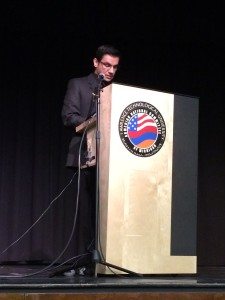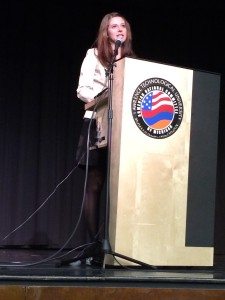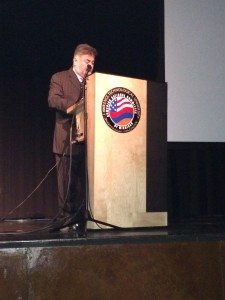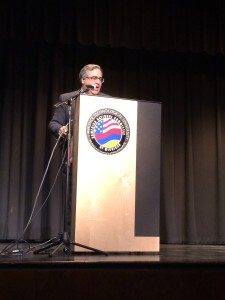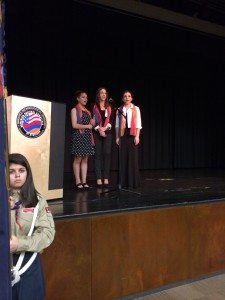The group of eight racially mixed young adults were delighted to be able to cool off with a swim after a hot summer day working in our store. Our relationship with the staff was always cordial—a lot like family—and it was natural to offer them a chance to frolic at our lake-side cottage.
Part of their delight was in knowing we had “smuggled” them in our van to a territory outside of the city, which was involved in a federal court case at the time. There were no African-Americans in Commerce Township then, so this could have been an unwise move on our part.
When we bought our summer lakefront get-away in the winter of 1968, we did not know that several miles away a member of the Ku Klux Klan was a year ‘round resident; but it soon became an important factor in our decision to refrain from taking any chances when we invited our employees to the cottage for a nighttime swim and picnic.
Sandra, Gloria, and Veronica were prim and proper Catholic Creoles who attended parochial school; Roger was the adult Caucasian working as a full-time parts store manager; Maurice was Indian and African-American; his very refined cousin John was of that same mixture, plus pure German on his mother’s side; and “little brother” Larry rounded out the teen group.
The location of our party store was on Woodward Avenue near the southern tip of Pontiac, barely a 20-mile trip south to Detroit. Pontiac was embroiled in a cross-district busing controversy that ended up with a federal court decision that changed the city forever.
Because of its industrial nature, many people from the south had come north to Pontiac to work in its factories during the early 1940′s. The industrial city of about 80,000 where I grew up had fabulous schools that gave me an exceptional education. It was soon ordered to have cross-district busing to have more racially balanced schools.
That decision resulted in the nighttime bombing that destroyed 10 school buses and added fuel to the fire. Six members of the Klan were convicted and served prison terms. We discovered one was our nearby cottage neighbor.
An organization called the National Action Group was formed by a fiery 36-year-old Greek-American, Irene McCabe, who protested for the right of students to attend schools in their own neighborhoods, as they had for generations.
McCabe and her group started a march from Pontiac to Washington, D.C. to appeal to the government for support, but to no avail. Our store was on her route, and the athletic shoe-clad warmly dressed women were invited into our place of business for refreshments as a show of support.
This was the atmosphere then, when Bob and I decided to bite the bullet and load the kids up into the van and make the trek to the cottage as a treat to them. After all, they deserved it.
It was mainly the same group that spent Christmas Eve with us at an elaborate buffet. We always bought nice gifts for them, and although we protested, they did the same for us. By law, businesses selling spirits had to close at 9 p.m., and we were more than happy for this, as Christmas and Easter were the only days we closed all year.
The kids swam in the lake, and Bob took them out on a tour on the big green houseboat. Their laughter and voices echoed off the water. I could hear their happy voices even as I stayed behind to prepare the burgers and hot dogs for a very late nighttime picnic. There were no racial barriers here.
We knew these young people and their parents so very well. They were loyal and honest. Their parents considered it a privilege for us to employ them. They thanked us profusely and even had the local newspaper write an article about the people who owned Woodward Market and how they provided not only a job but an atmosphere where their children learned to use an electronic cash register, how to make change, how to dress and properly greet customers. This money helped pay for college.
There was a lot of joking and kidding around between Bob and our staff. After our two sons were born, I spent less time working in the store. I filled in as needed, with my parents being the only baby sitters. There was even a time Bob and I experimented with staying open until 2 in the morning with their assistance. (This attempt at a 17-hour workday was brief.)
John went to Michigan State and majored in public relations, always introducing us to his fellow students as “my parents.” He lives in San Francisco, and because of his close friendship with Bob and my strong ethnic influence on him, joined a Syriac Orthodox Church there. The three sisters married well and have grown children of their own. “Little Brother” owns a gas station. And Larry has an out of state new car dealership. I like to think the influence of working at our store helped in molding the character of these nighttime smuggled swimmers.
Maurice’s story was the only one with a sad ending. He was our first part-time employee. We had hired him at the age of 10 to fill the coolers, sweep and mop, and carry out the trash. He learned to swear in Turkish from my father, who after retiring had our store as a place of refuge. It was more like he owned the store and we worked for him. It was grand for all of us, especially my mother.
Maurice had a great opportunity after high school graduation to work at a coop program with General Motors, but it seems he picked up with the wrong crowd after we sold the store. He got hooked on drugs and was found dead of an overdose in a local motel. How bad Bob and I felt, almost like we had let the kid down. We had moved away and were very busy raising our own young sons.
Maurice was raised in a fatherless home, and lived with his mother and grandparents. His grandfather was known to drink a little too much, but they provided him with a nice home and guidance. What went wrong? I know this: His mother was so grateful to us for taking him under our wing, almost like our own kid. He was with us even before our sons were born. I have so many wonderful memories of him as well of the others, but Maurice was our “first.” Little Moe’s demise at such an early age still hurts.






